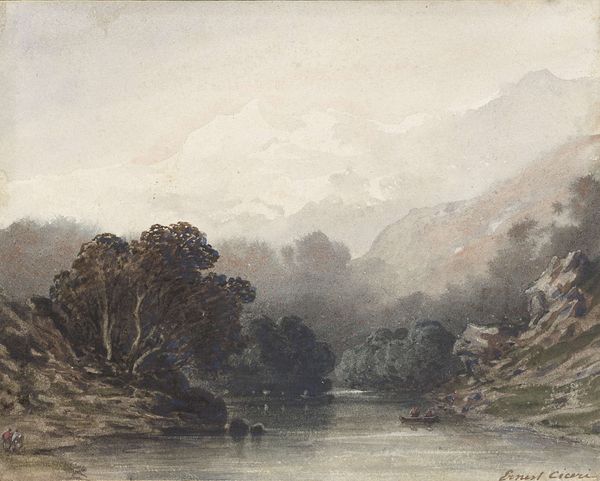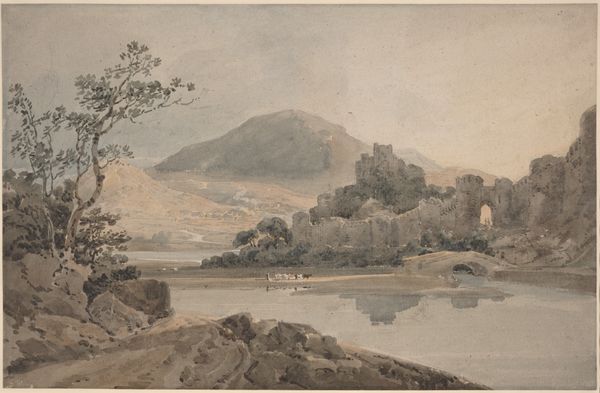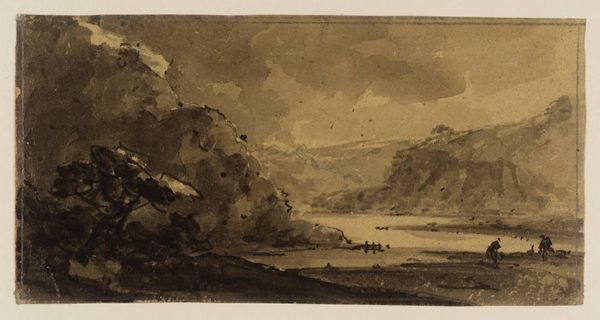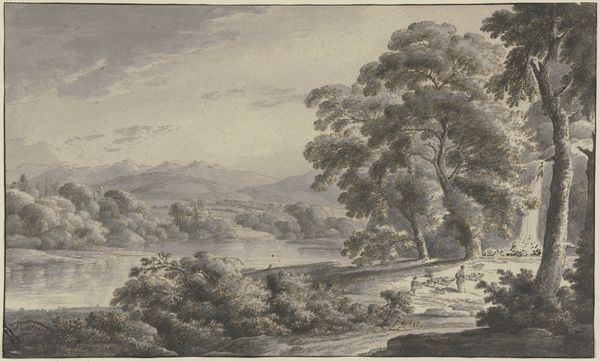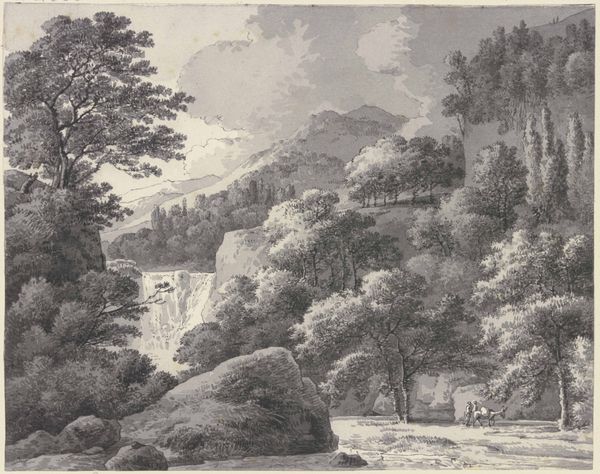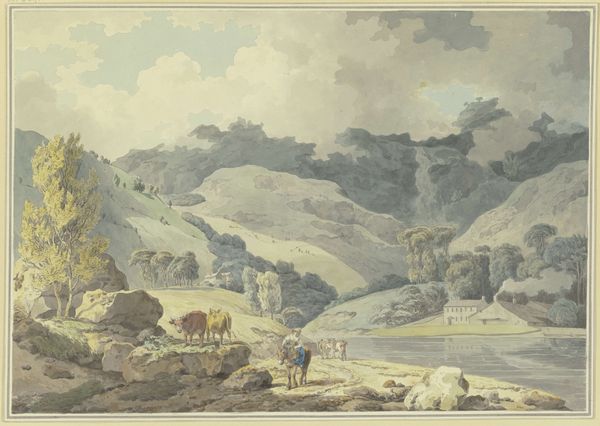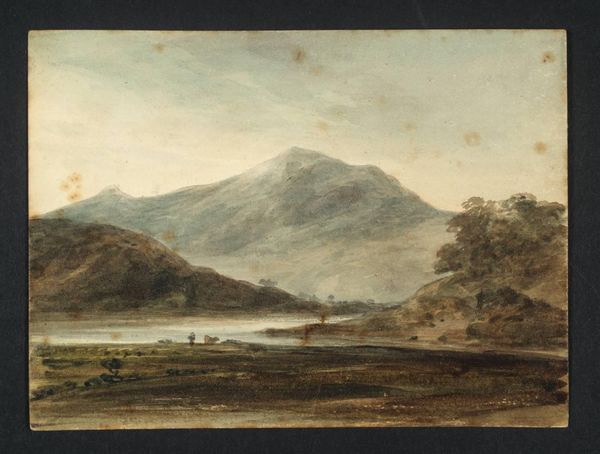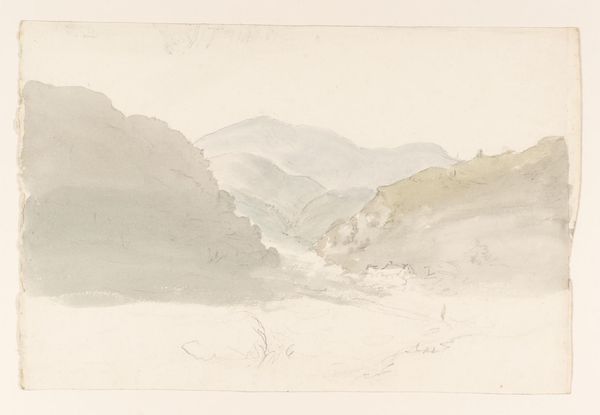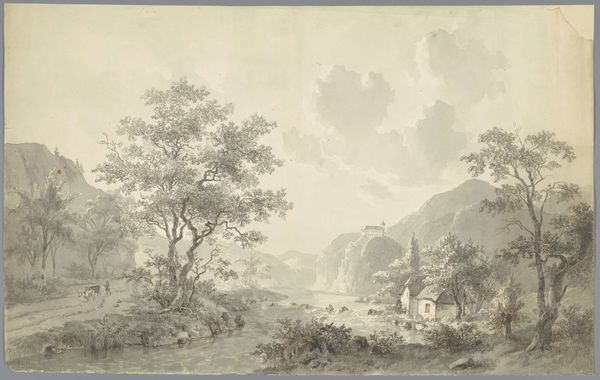
Cattle Resting in a Mountainous Landscape, Bengal 1803 - 1813
0:00
0:00
drawing, plein-air, watercolor
#
drawing
#
plein-air
#
landscape
#
figuration
#
watercolor
#
romanticism
#
orientalism
#
watercolor
#
realism
Dimensions: sheet: 4 7/8 x 7 15/16 in. (12.4 x 20.2 cm)
Copyright: Public Domain
Curator: At first glance, this watercolour seems… hazy. Almost dreamlike. Is that mist I see snaking through the valley? Editor: Indeed. What we are looking at is "Cattle Resting in a Mountainous Landscape, Bengal", a work on paper attributed to George Chinnery, dating from about 1803 to 1813. The artwork employs a delicate plein-air approach to watercolor painting, blending both Romantic and Orientalist styles, now residing here at the Metropolitan Museum of Art. Curator: Chinnery clearly was working on site capturing the transient qualities of light and atmosphere. This work presents a fascinating insight into British artistic interpretations of India during that period. Editor: Absolutely. Chinnery's method reveals the challenges of art production and accessibility at this moment in the history of the British Empire. Watercolor on paper wasn't just about convenience for travel, it also speaks to broader production strategies for meeting audience demands, given the realities of the Empire’s structures. The social contexts in which he operated, as an artist catering to a specific colonial demographic, are of interest. Curator: It makes me wonder how Chinnery positioned himself in that society, navigating artistic traditions alongside his own background, and how his reception was shaped. Editor: Reception is interesting here: watercolor drawings often operated within particular circuits of value that weren’t equivalent to oil painting, for instance. I mean, look closer—these cattle appear both exoticized *and* essentialized. This raises broader questions about landscape’s importance for representing colonial spaces. Curator: Precisely, the exoticism is tangible and is visible in many levels throughout the landscape, though what it signifies is somewhat less discernible. I find the material conditions of this drawing allow Chinnery to play on a cultural landscape through a more manageable means, using less intense techniques. Editor: It gives you something to chew on! Curator: A light snack for the soul, you might say. Thanks for bringing your unique insights today! Editor: Likewise. It's always exciting to connect how art echoes its circumstances, down to the very pigment on the page.
Comments
No comments
Be the first to comment and join the conversation on the ultimate creative platform.
